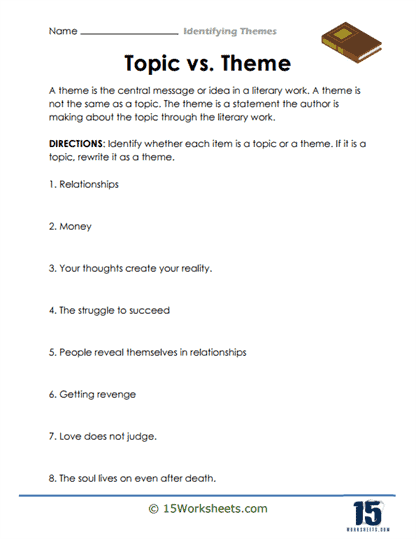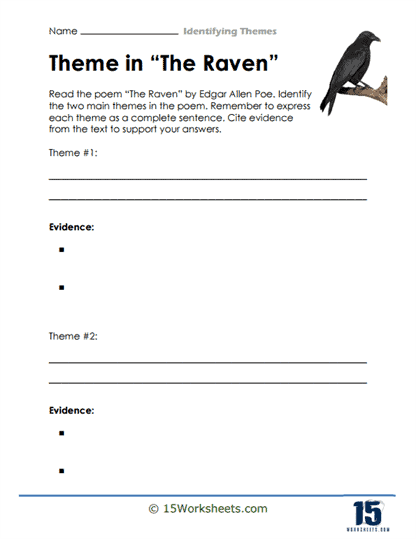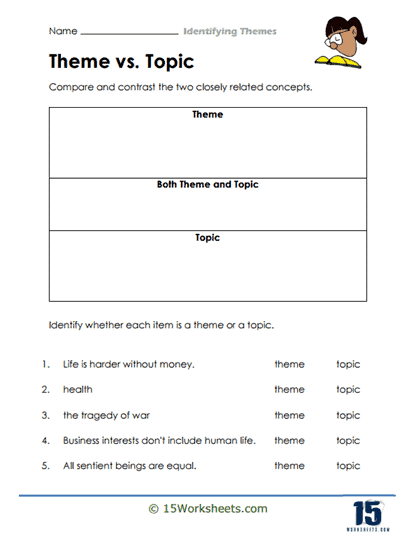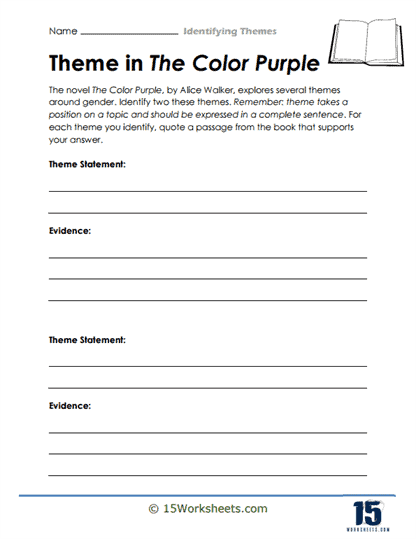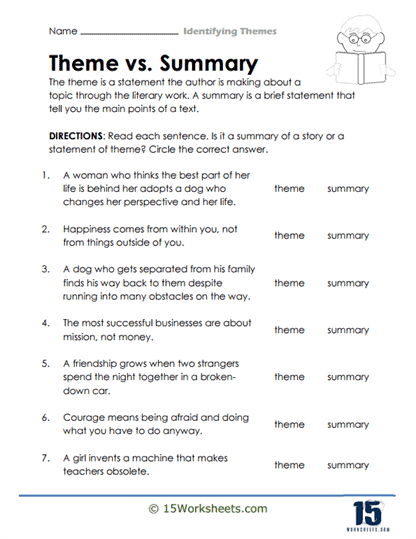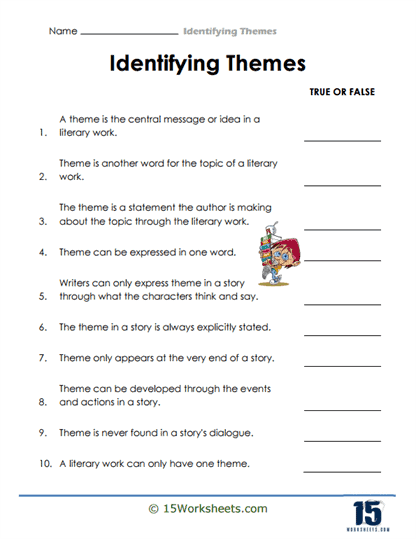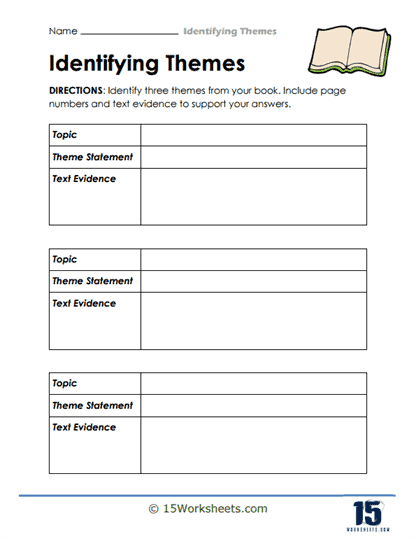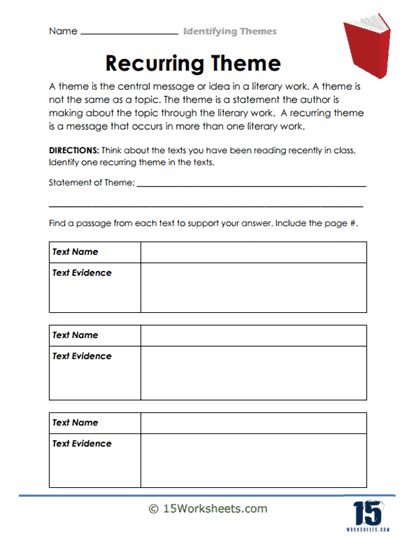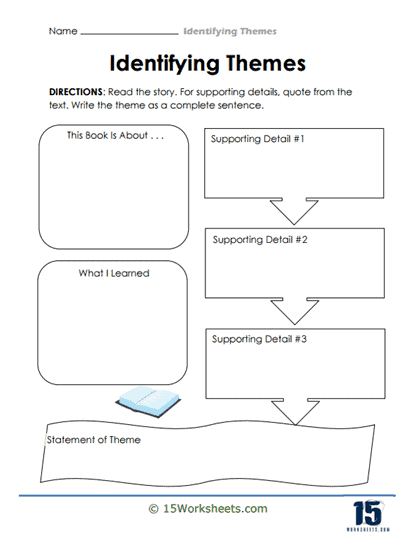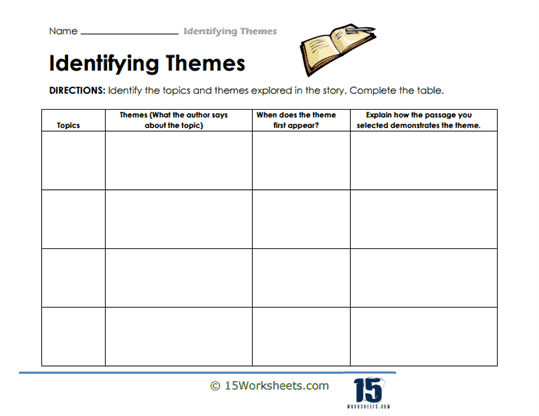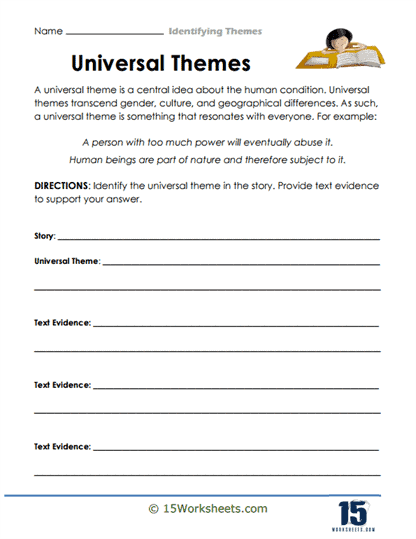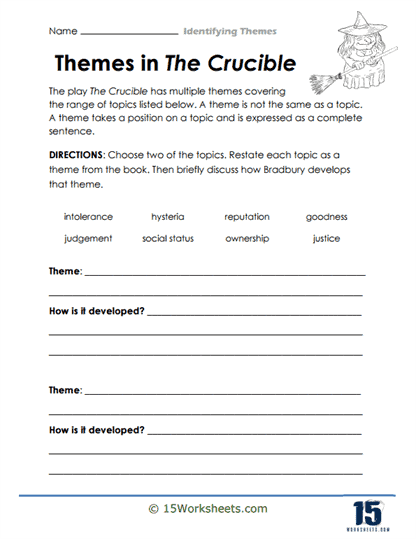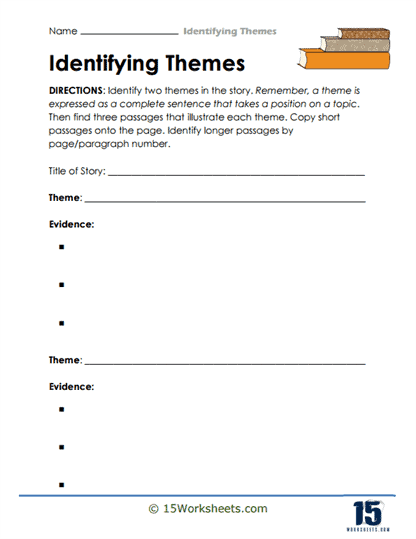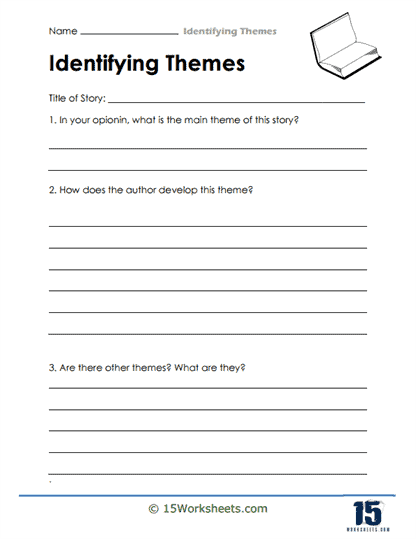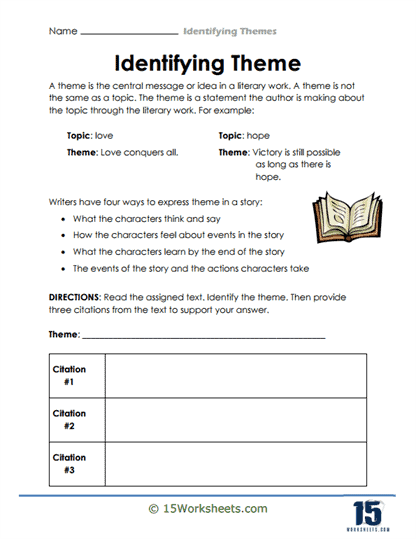Identifying Themes Worksheets
All About These 15 Worksheets
Imagine if you went to see a movie with your friends, and after the movie, you all sat down to talk about what it was about. You might say that it was about a girl who made a journey to another world, met strange creatures, and then found her way back home. That’s the basic story or plot. But then your friend might say that the movie was really about the importance of bravery, friendship, and believing in yourself. Those ideas – bravery, friendship, and belief in oneself – are called “themes.”
Themes are the big, important ideas that a story is trying to show you. They’re not always right on the surface. Instead, they’re kind of hidden underneath the plot and characters and settings. It’s like a treasure hunt for your brain!
These worksheets are like detective tools that help you dig deeper into a story. They ask you questions and get you thinking, not just about what happens in the story, but about what the story is really about. They help you understand not just the events, but the big ideas that make the story important and meaningful.
What is the Best Way to Identify Themes in What You Read?
Identifying themes in a text is an important aspect of reading comprehension and literary analysis. Themes are the central ideas, messages, or underlying meanings that a writer explores in their work. Here are some strategies to help you identify themes while reading:
Read the text carefully: Thoroughly read and understand the text, paying attention to important details, events, and character development. Take notes or annotate as you read to highlight key passages or recurring ideas.
Analyze the title: Often, the title of a work can provide hints or insights into the themes the author intends to explore. Consider how the title relates to the content and overall message of the text.
Identify recurring motifs or symbols: Look for recurring motifs, symbols, or images throughout the text. These can often serve as clues to the themes the author wants to convey.
Examine character development: Analyze the characters, their motivations, and how they evolve throughout the story. Consider the lessons they learn, the conflicts they face, and the choices they make, as these can help reveal the themes at play.
Consider the setting: The time and place in which the story takes place can also provide insights into the themes being explored. Consider how the setting influences the characters, plot, and overall atmosphere of the work.
Reflect on conflicts and resolutions: Identify the main conflicts (both internal and external) that drive the story, and consider how they are resolved. The ways in which conflicts are resolved can often illuminate the themes the author is trying to express.
Look for statements or quotes: Pay attention to any explicit statements or quotes made by the characters or the author that seem to convey a message or lesson. These can provide valuable clues to the themes being explored.
Connect to real-life issues: Consider how the text relates to real-life issues, concerns, or questions. Themes often reflect universal human experiences, emotions, or societal concerns, so drawing connections to real-life situations can help identify the themes at play.
Synthesize your findings: After analyzing the various elements of the text, synthesize your findings to identify overarching themes. Look for patterns or connections among the characters, plot, setting, and motifs that point to central ideas or messages.
Discuss with others: Engage in discussions with classmates, friends, or teachers about the text. Hearing others’ perspectives and interpretations can help you gain a deeper understanding of the themes and broaden your own analysis.
By using these strategies, you can effectively identify themes in the texts you read, enhancing your reading comprehension and appreciation for the literary work.

